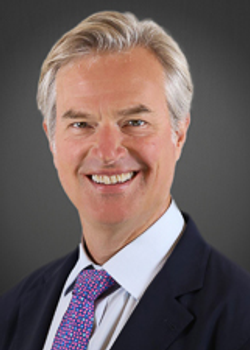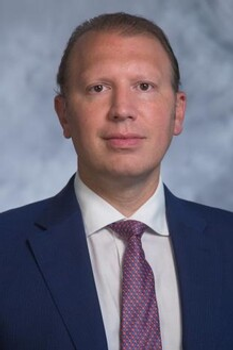Lordosis Overview
Learn About Lordosis
Lordosis is the inward curve of the lumbar spine (just above the buttocks). A small degree of lordosis is normal. Too much curving is called swayback.
Swayback; Arched back; Lordosis - lumbar
Lordosis tends to make the buttocks appear more prominent. Children with hyperlordosis will have a large space underneath the lower back when lying face up on a hard surface.
Some children have marked lordosis that most often fixes itself as the child grows. This is called benign juvenile lordosis.
Spondylolisthesis may cause lordosis. In this condition, a bone (vertebra) in the spine slips out of the proper position onto the bone below it. You may be born with this. It can develop after certain sports activities, such as gymnastics. It may develop along with arthritis in the spine.
Much less common causes in children include:
- Achondroplasia, a disorder of bone growth that causes the most common type of dwarfism
- Muscular dystrophy
- Other genetic conditions
Most of the time, lordosis is not treated if the back is flexible. It is not likely to progress or cause problems.
Contact your health care provider if you notice that your child has an exaggerated posture or a curve in the back. Your provider must check to see if there is a medical problem.
The provider will do a physical exam. To examine the spine, your child may have to bend forward, to the side, and to lie flat on a table. If the lordotic curve is flexible (when the child bends forward the curve reverses itself), it is generally not a concern. If the curve does not move, medical evaluation and treatment are needed.
Other tests may be needed, particularly if the curve seems "fixed" (not bendable). These may include:
- Lumbosacral spine x-ray
- Other tests to rule out disorders that could be causing the condition
- MRI of the spine
- Laboratory tests
University Orthopedics Inc
Alan Daniels is an Orthopedics provider in Providence, Rhode Island. Dr. Daniels has been practicing medicine for over 18 years and is rated as an Elite provider by MediFind in the treatment of Lordosis. His top areas of expertise are Kyphosis, Fractured Spine, Lordosis, Spinal Fusion, and Osteotomy.
Northwell Health Physician Partners Orthopaedic Institute At Lenox Hill
An internationally renowned spine surgeon, Frank Schwab, MD, FAAOS, specializes in complex spinal pathology, pediatric and adult spinal deformity and revision reconstruction procedures. Dr Schwab s areas of clinical focus include innovating patient-specific operative treatment, optimizing sagittal realignment guidelines, emphasizing the use of pre-operative planning technologies and techniques for complex spine surgery. He is widely recognized as a leader in the field and has pioneered many aspects of spinal deformity care, especially for patients with extensive surgical histories. Dr Schwab also developed the first definitive classification of adult spinal deformity that has become a clinical standard for spinal surgeons all over the world. Dr. Schwab is rated as an Elite provider by MediFind in the treatment of Lordosis. His top areas of expertise are Lordosis, Kyphosis, Scoliosis, Osteotomy, and Spinal Fusion.
Duke Spine Center - Clinic 1B/1C
Throughout my medical career, I have remained dedicated to improving my patients' quality of life. As a specialist in adult cervical and spinal deformity surgery, I understand the significant impact our interventions have on individuals suffering from debilitating pain and physical and mental health challenges. Spinal deformity surgery merges the complexities of spinal biomechanics with the needs of an aging population. My research focuses on spinal alignment, biomechanics, innovative surgical techniques, and health economics to ensure value-based care that enhances patient outcomes. Dr. Passias is rated as an Elite provider by MediFind in the treatment of Lordosis. His top areas of expertise are Kyphosis, Lordosis, Scoliosis, Osteotomy, and Spinal Fusion.
Summary: Children with CP exhibit trunk control issues from early childhood, affecting their balance and gait. These issues manifest as unstable walking, increased step width, and more pronounced anterior deceleration of the sternum. Previous studies have shown that early action of the triceps surae compensates for the deficit in trunk postural control. Rehabilitation targeting the trunk has shown signific...
Summary: Anterior pelvic tilt (APT) is a prevalent postural deviation characterized by excessive forward rotation of the pelvis, often resulting in increased lumbar lordosis. This condition is frequently associated with non-specific low back pain (NSLBP), which affects a significant portion of the global population and poses substantial challenges for individuals' well-being and healthcare systems worldwid...
Published Date: February 17, 2024
Published By: Charles I. Schwartz, MD, FAAP, Clinical Assistant Professor of Pediatrics, Perelman School of Medicine at the University of Pennsylvania, General Pediatrician at PennCare for Kids, Phoenixville, PA. Also reviewed by David C. Dugdale, MD, Medical Director, Brenda Conaway, Editorial Director, and the A.D.A.M. Editorial team.
Mistovich RJ, Spiegel DA. The spine. In: Kliegman RM, St. Geme JW, Blum NJ, Shah SS, Tasker RC, Wilson KM, eds. Nelson Textbook of Pediatrics. 21st ed. Philadelphia, PA: Elsevier; 2020:chap 699.
Warner WC, Sawyer JR. Scoliosis and kyphosis. In: Azar FM, Beaty JH, eds. Campbell's Operative Orthopaedics. 14th ed. Philadelphia, PA: Elsevier; 2021:chap 44.

